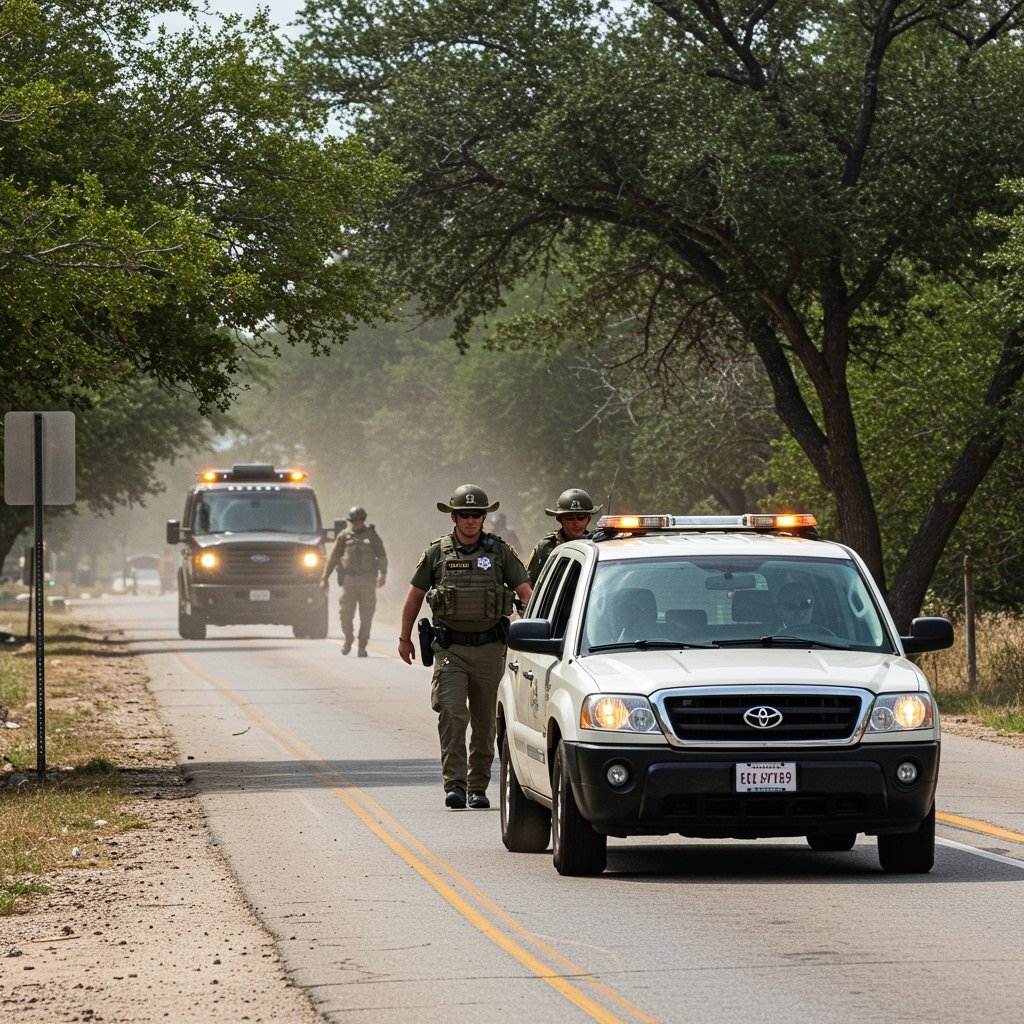Texas Reinforces Border Security with Major Deployment
AUSTIN, TX – April 30, 2025 – In a significant escalation of its ongoing border security initiative, Operation Lone Star, the Texas Governor’s office today announced the deployment of hundreds of additional personnel and state law enforcement assets to key areas along the state’s southern border. This decisive action comes in direct response to recent data indicating a substantial surge in migrant encounters observed throughout the month of April.
State officials cited the increasing volume of crossings as the primary driver behind the reinforcement effort. The deployment, encompassing hundreds of Texas National Guard personnel alongside state law enforcement officers, is strategically directed towards sectors experiencing the highest levels of activity, with particular emphasis placed on the critical areas around Eagle Pass and Del Rio.
Operation Lone Star’s Expanded Scope
Operation Lone Star, launched in March 2021, integrates efforts from the Texas Department of Public Safety (DPS) and the Texas Military Department (TMD) to deter and apprehend individuals attempting to cross the border unlawfully. The initiative’s stated goals include preventing cartels and smugglers from trafficking drugs and people into Texas. This latest deployment represents one of the largest single reinforcements under the operation to date.
The decision to bolster manpower and resources reflects the state’s persistent assertion of its role in border enforcement, an area that has frequently been the subject of jurisdictional debates with the U.S. federal government. Texas officials argue that the scale of migration necessitates robust state intervention to supplement, or in their view, compensate for perceived gaps in federal enforcement.
Responding to April’s Surge in Encounters
The impetus for this deployment is directly tied to the data collected throughout April 2025. According to figures referenced by state authorities, the southern border saw a significant increase in the number of migrant encounters compared to previous months. While specific raw numbers were not immediately released with the initial announcement, the description of the increase as \”significant\” underscored the perceived urgency of the situation by the Governor’s office.
This surge places additional strain on existing resources and personnel already operating under Operation Lone Star and local authorities in border communities. The strategic targeting of Eagle Pass and Del Rio is consistent with historical migration patterns, as these sectors have often served as major crossing points due to geographic factors and established smuggling routes.
Bolstering Interdiction and Local Support
The primary objectives of deploying these additional hundreds of Texas National Guard troops and state law enforcement assets are twofold: to bolster interdiction efforts and to provide enhanced support to local authorities. \”Bolstering interdiction\” involves increasing the capacity to detect, pursue, and apprehend individuals crossing unlawfully between ports of entry. This includes expanding patrols, enhancing surveillance capabilities, and establishing more checkpoints or observation points.
Texas National Guard personnel, operating under state command, will provide additional manpower for border security missions, which can include manning observation posts, conducting foot and vehicle patrols, and assisting in the transportation of apprehended individuals. State law enforcement assets, likely including troopers from the Department of Public Safety, will focus on enforcing state laws related to border security, such as criminal trespassing or human smuggling charges where applicable under state statutes.
The \”enhanced support to local authorities\” aspect addresses the burden placed on county sheriffs’ offices, city police departments, and local infrastructure in border regions. These local entities often have limited resources and personnel to manage the scale of migrant arrivals, humanitarian needs, and related criminal activity. The state deployment aims to alleviate some of this pressure by providing assistance with transportation, security, and potentially resources for processing or holding individuals apprehended under state law.
State vs. Federal Jurisdiction: Ongoing Context
The announcement explicitly mentioned that this action \”underscores the state’s continued focus on border security amidst ongoing jurisdictional disputes with the federal government over enforcement responsibilities.\” This sentence highlights the persistent tension between Texas and the Biden administration regarding border management. Texas officials contend that the state has a constitutional right to defend its border in the face of what they describe as inadequate federal enforcement. The federal government, conversely, maintains that immigration enforcement is primarily a federal responsibility.
This dispute has manifested in various forms, including legal challenges over the state’s placement of physical barriers, such as razor wire and buoy systems, and disagreements over the state’s authority to apprehend and transport migrants. The deployment on April 30, 2025, serves as another tangible expression of Texas’s commitment to its independent border strategy under Operation Lone Star, signaling a willingness to expend state resources and deploy state forces to address the situation as perceived from Austin.
Looking Ahead
The increased presence of Texas National Guard and state law enforcement personnel in Eagle Pass, Del Rio, and other identified hotspots is expected to significantly alter the operational landscape in these areas. While the duration of the deployment was not specified in the initial announcement, such reinforcements typically remain in place as long as the conditions prompting their deployment persist. The effectiveness of this surge in deterring crossings and impacting smuggling operations will be closely watched, as will its impact on local communities and the ongoing dialogue between state and federal authorities regarding border security responsibilities.






